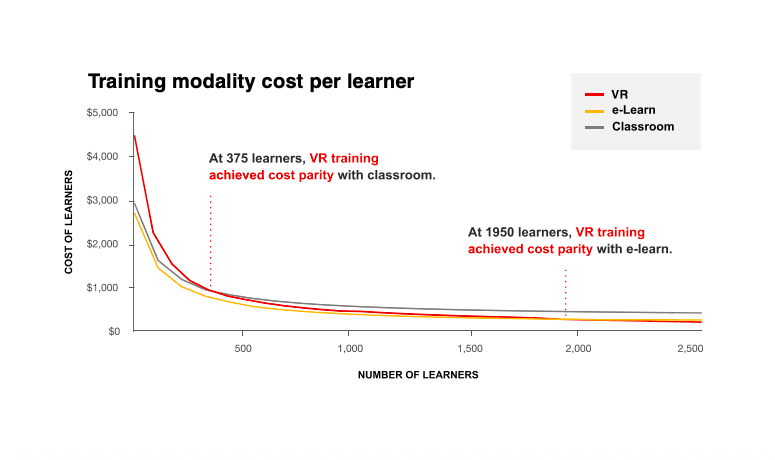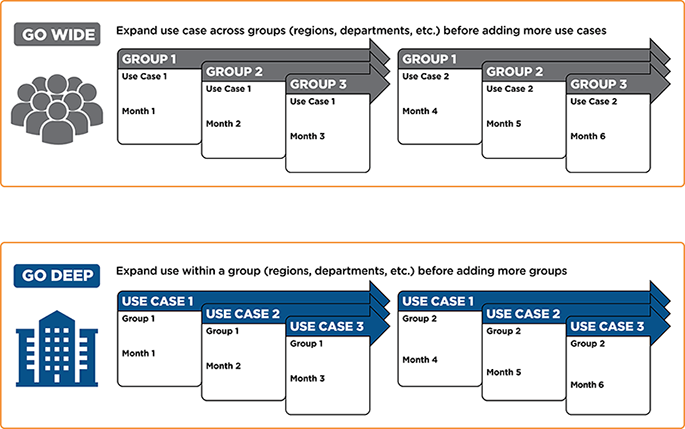PWC has published a strong case for VR learning (v-learn). The report compared the costs of class room, e-learning and v-learning (VR) to determine ROI for each method of training. The ROI data came back with a strong endorsement for VR learning.
Class room training, e-learning, VR training and learning all require investment for planning, design, development and deployment.
For VR, measuring the cost against the effectiveness of VR is key to measuring the ROI.
In PWC’s report last month THE EFFECTIVENESS OF VIRTUAL REALITY SOFT SKILLS TRAINING IN THE ENTERPRISE proved that the ROI of VR learning out performs the ROI of class room and e-learning even before the numbers hit 3,000 employees.
There were a few variables that had an impact of the overall ROI:
- The total cost to build a course for a specific modality.
- The cost to facilitate, manage and operate a course for each specific modality.
- The number of people that are trained.
- The fully loaded cost per hour of each employee trained including revenue loss.
- The average time it takes for an employee to be trained for each specific modality. If a modality takes less time to train someone, that employee can go back to work sooner, and less revenue is lost.

The curve above shows that VR learning becomes more cost effective than classroom and e-learn modalities. The fewer employees you train, the more expensive the cost per learner. The more you train, the less it costs per learner. However, it is not a linear curve. As an example, if you train 100 employees, you have to recover the entire cost to create and deploy the course across those 100 employees. The numbers used in the models were for a custom built course.
ROI will be different for every company. If the fully loaded cost per employee is $35, the number of learners you require to reach ROI is significantly higher.
Although the data for 3,000 learners for e-learning was more cost effective than VR training, if you remove the cost of onboarding users and the cost of facilitation, VR learning catches up and actually becomes more cost effective to deploy at 3,000 learners.
The report concludes that if the numbers scale up to enterprise scale (10,000 learners as example), the e-learn drops to $121 per learner and VR learning to $53 per learner – making the ROI of VR learning a clear winner.
Quelle:




